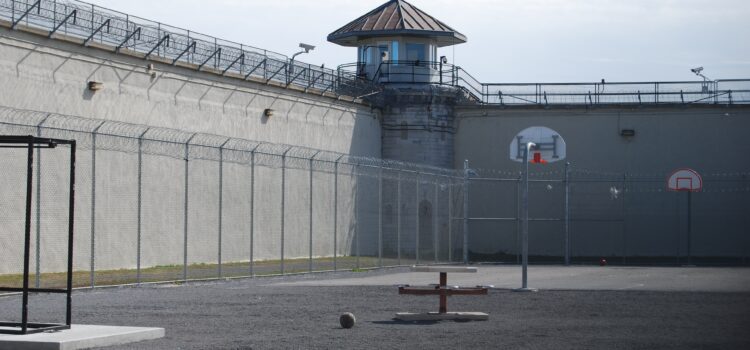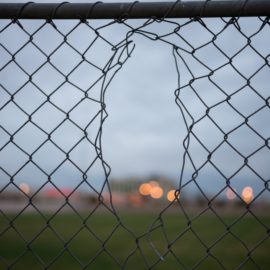

This article is an excerpt from the Shortform summary of "Orange Is The New Black" by Piper Kerman. Shortform has the world's best summaries of books you should be reading.
Like this article? Sign up for a free trial here .
What is the Orange Is the New Black setting? What was Piper’s life like at Danbury Prison?
The Orange Is the New Black setting is Danbury prison. Piper Kerman served out her sentence for drug smuggling primarily at Danbury.
The Orange Is the New Black setting offers insights into life in prison and the systemic issues inmates face.
Orange Is the New Black Setting: Welcome to Danbury
The Orange is the New Black setting is mainly Danbury Prison. Piper self-surrendered in February 2004, reporting to Danbury with Larry. They sat in the waiting room of the correctional facility for hours as they waited for her paperwork to be processed—an early introduction to the red tape and bureaucratic inefficiency that would define so much of her prison experience.
While waiting, Piper munched on a foie gras sandwich that Larry had packed her the night before, a glaring symbol of her wealth and privilege. In a prison whose inmate population was disproportionately poor women of color, eating a gourmet sandwich made of fattened duck liver reminded Piper of just how different she was from these other inmates who were about to become her neighbors and daily companions. She mused to herself that this had to have been the only time in the history of the American penal system that someone was eating foie gras in the waiting room.
Intake
Piper had a lot to learn about the Orange is the New Black setting, Danbury Federal Prison. At last, Piper was asked to leave the waiting room and enter the prison to begin the intake process. Larry was not allowed to accompany her beyond this point. Piper said her tearful, painful goodbye to her fiancé, during which Larry told Piper that he would call her and come back to visit her as soon as he possibly could. She watched as he left the waiting room and looked out the window as he crossed the parking lot, got into his car, and drove off out of her sight. She was now truly alone.
After Larry was gone, Piper was brusquely told by the female guard performing her intake that she might not have the opportunity to see Larry for weeks. It would take time for her paperwork to be processed—until it was, her friends and family were not cleared to visit her. Every inmate had an approved and vetted visitor list; if a visitor wasn’t on the list or a correctional officer failed to complete the paperwork to get a visitor on the list (which, Piper learned, was an all-too-common occurrence), the visit would not be approved. This was devastating news for Piper, who desperately needed to see Larry immediately and couldn’t bear the notion of an indefinite separation.
Worse still, they told her that the money in her commissary account (the prison commissary was where inmates could purchase various food, clothing, and personal hygiene items that were not issued by the prison) would have to go through a circuitous process before it was processed and available for use. This, too, she was told, might not be done for weeks. This was one of the many things Piper had to learn about the Orange is the New Black setting.
As she went through the various security checks and moved further and further into the bowels of the prison (and further away from her former life), she was intimidated by the harshness and severity of the prison’s maze of concrete walls, as well as the coarseness of the guards. All throughout the dehumanizing intake process, her jailors barked orders at her and treated her with minimal human dignity and respect. Even worse was the strip search. In an effort to find potential contraband or drugs smuggled into the prison, Piper was forced to strip, bend over, squat, and cough, while the correctional officer (CO) performed a cavity search.
Then at Danbury Prison, the female CO grilled Piper when she saw that she had some photos of friends and family. The CO demanded to know if Piper was smuggling in nude pictures (or “Nudie Judies” as she called them), which was strictly against prison rules. Piper said she was not, and was allowed to take the photos in. Capping off the bewildering process, Piper was finally issued her prisoner number. She was no longer Piper Kerman; she was now federal inmate #11187-424. It was a new identity for a new life at Danbury Federal Prison.
Learning the Ropes
The next day, Piper received her permanent, official uniform. But she was still not fully integrated into the Danbury ecosystem. As a new arrival, Piper was classified as “A&O” (admission and orientation). This meant that she was not yet eligible to be assigned to a permanent job, for which she could be paid (albeit at $0.14 per hour), until she was cleared to have one. This was yet another example of the maddeningly slow and inefficient bureaucracy, which seemed to be an inescapable feature of prison life. The slow-moving pace of events was called “prison time” by the inmates, an was defined by the Orange is the New Black setting.
Piper headed to the orientation session with her fellow new inmates. These women were a mix of those who, like Piper, were experiencing the penal system for the first time, as well as recidivists who had been in and out of prison before. At orientation, they listened to a series of lectures from various prison officials, the goal of which was to familiarize the new arrivals with the rules and culture at Danbury. The on-staff psychiatrist was blunt in admitting to the women that he had no resources to provide comprehensive mental health services—all he could do was issue antipsychotic and antidepressant medications.
The final presenter was the female warden, Ms. Deboo, an attractive, put-together, and thoroughly professional woman. She used her speaking time to warn the new arrivals about sexual contact in prison and reminded the women that non-consensual sex was strictly prohibited. As she spoke, Piper realized she wasn’t talking about sexual contact between inmates; she was talking about unwanted advances from the guards. Clearly, the fact that Warden Deboo felt the need to give such a warning spoke to the abuses that were possible in an environment with such a stark power disparity between male guards and female inmates at Danbury Federal Prison.
Piper was impressed by Warden Deboo, but other inmates saw through her polished presentation. They said that the warden was disingenuous, driven by ambition, and concerned primarily with appearances, assuring Piper that she rarely ventured into the prison to interact with inmates and staff.

———End of Preview———
Like what you just read? Read the rest of the world's best summary of Piper Kerman's "Orange Is The New Black" at Shortform .
Here's what you'll find in our full Orange Is The New Black summary :
- The real, more nuanced story behind the hit TV show
- How upper-class Piper Kerman landed in prison on drug charges
- The key lessons Kerman learned about society and herself






